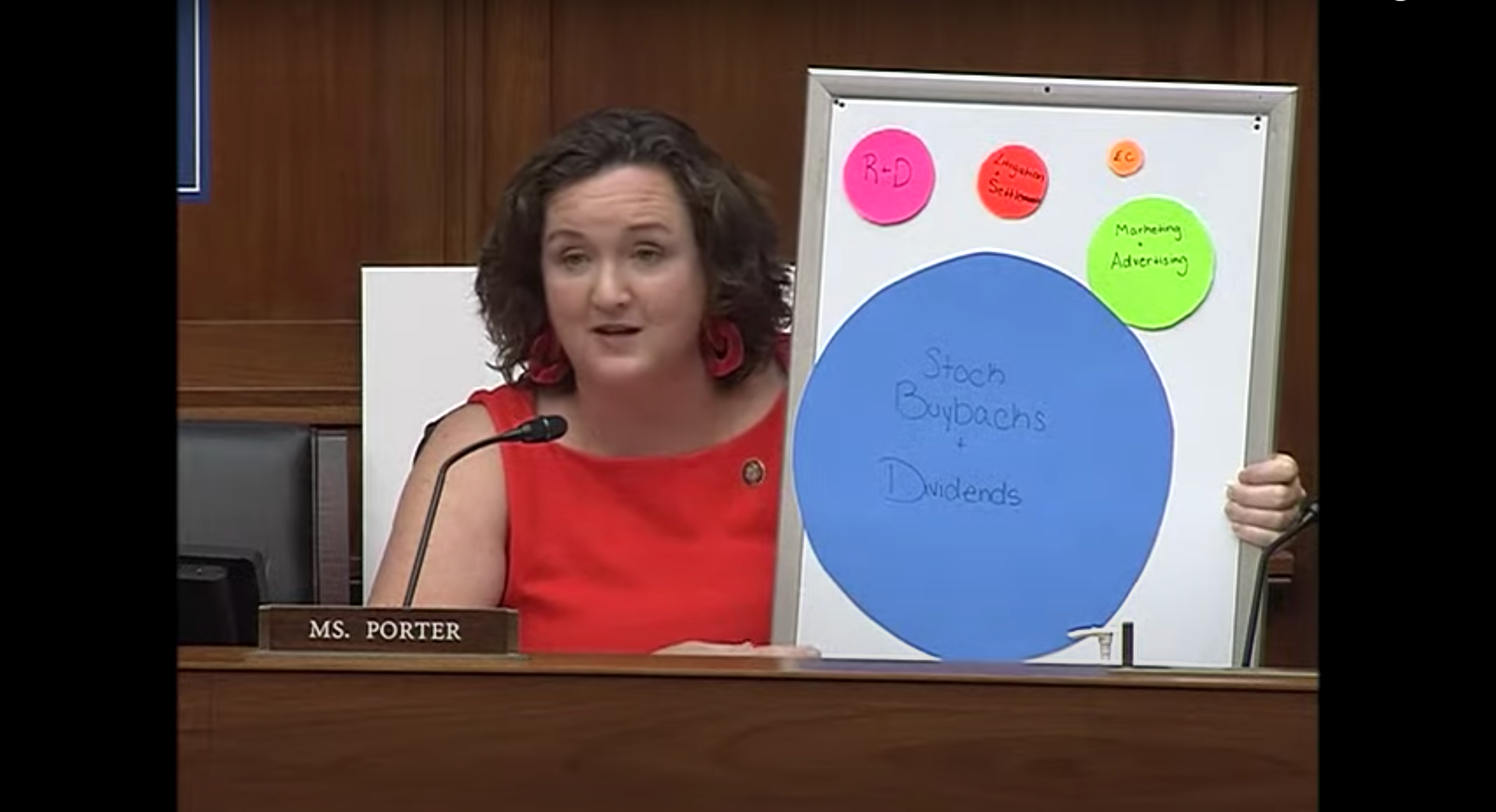Rep Katie Porter brought back her ‘whiteboard of justice’ to tackle big pharma pricing ‘fairy tale’
The congresswoman highlights that the company’s advertising spending is nearly double what it spends on research and development

US Rep Katie Porter's formidable white board made another appearance during a recent congressional hearing in which she grilled the CEO of pharmaceutical company AbbVie over the "astronomical prices" of drugs.
Richard Gonzalez, the CEO of AbbVie, faced members of the House Oversight Committee on Tuesday, who asked him why he was increasing the price of the company's top-selling drug, Humira, to $77,000 for a year's supply.
Ms Porter has become famous for her fiery retorts at business executives, using her “whiteboard of justice” to hammer home home her points.
Humira is an injection drug that helps prevent inflammation related to a number of ailments, including Crohn's disease, ulcerative colitis and arthritis, among others.
Last year, the drug raked in nearly $20bn for the company, making it easily the world's best selling pharmaceutical drug.
Ms Porter blasted Mr Gonzalez and accused he and other pharmaceutical executives of getting rich and hoarding earnings off the backs of the people who desperately need the drugs.
"The Big Pharma fairy tale is one of groundbreaking R&D that justifies astronomical prices. But the pharma reality is that you spend most of your company's money making money for yourself and your shareholders," Ms Porter said.
The confrontation was set in motion after AbbVie announced in January that it would raise the price of Humira by 7.4 per cent, justifying the increase by claiming it was necessary to pay for research and development costs.
Between 2013 and 2018, the company spent $2.45bn on research and development – a huge investment, to be sure, but not as much when compared to what Humira earned the company in a single year.
Ms Porter pointed out that the company spends nearly double that amount, $4.7bn, each year in advertising.
She then asked Mr Gonzalez how much the company paid its executives between 2013 and 2018, to which he replied "about $60 million a year”.
Ms Porter shot back, saying, "try 334 [million] on for size," though there may have been some miscommunication, as Mr Gonzalez's estimate of $60m in executive pay over the course of the five years was in-line with her numbers.
She later noted that the company spent around $50bn on cumulative stock buybacks and dividends over the five year period, again arguing that the companies were using their customers' desperation to milk them and the health insurance companies.
"You're spending all this money to make sure you make money rather than spending money to invest in [and] develop drugs and help patients with affordable, lifesaving drugs," Ms Porter said. ""You lie to patients when you charge them twice as much for an unimproved drug, and then you lie to policymakers when you tell us that R&D justifies those price increases."
She accused the CEO of feeding lawmakers "lies."
"The fact [is] that you're not honest about that with patients and policymakers—that you're feeding us lies that we must pay astronomical prices to get 'innovative' treatments," she said "The American people, the patients, deserve so much better."
Join our commenting forum
Join thought-provoking conversations, follow other Independent readers and see their replies
Comments
Bookmark popover
Removed from bookmarks